Harriott, Apsley and Pattison Houses

On 15 April 2025 the Council made a Compulsory Purchase Order (CPO) titled the London Borough of Tower Hamlets (Harriott House, Apsley House, Pattison House) Compulsory Purchase Order 2025 (the Order).
The Order was submitted with supporting documents including the Council's Statement of Reasons to the Secretary of State for Housing, Communities and Local Government (the Secretary of State) for confirmation on 15 May 2025.
Objections to the Order were received and the Secretary of State by way of a letter dated 17 June 2025 has given notice of an intention to hold an inquiry into the objections raised.
The council submitted its Statement of Case and Core Documents to the Secretary of State on 22 September 2025. If confirmed by the Secretary of State, the order will enable the council to compulsorily acquire interests in the order land in order to facilitate the comprehensive regeneration of the estate in accordance with adopted planning policy and a planning permission.
Consultation result
Residents voted in favour of the redevelopment of Harriott, Apsley and Pattison Houses.
The council has been consulting with homeowners and tenants in Harriott, Apsley and Pattison Houses about the future of their estate. The proposed redevelopment will provide approximately 450 homes, of which 79 will be replacement homes for existing tenants and resident leaseholders.
A recent ballot saw 121 votes cast in favour of the proposals with just two votes against – a majority of 98 per cent.
Read more about the result and what it means for residents and the community.
Why does the council need to build more homes?
The average cost of renting a flat in Tower Hamlets is now more than the average household income. There are already more than 19,000 households on the housing register in need of an affordable home and over 2,000 households living in temporary accommodation. Although more new homes were built in Tower Hamlets in 2018 than anywhere else in the UK, the average price is now 22 times the average salary, so our residents often can’t afford to buy them.
In response, the council has committed to delivering 2,000 new council homes by 2022. These genuinely affordable homes will include properties big enough for families. One in ten will be wheelchair accessible.
At just eight square miles, space to build in Tower Hamlets is in short supply. We’re making the most of land that we already own, including buildings no longer used as they once were.
But that isn’t enough. We also need to look closely at whether there is room for us to increase the number of homes on existing estates.
We can do this by finding ‘infill sites’ or gaps on estates where new buildings can go. We’re also looking carefully to see if we can redevelop existing estates to replace older buildings with ones that are modern, better designed and crucially, that provide more council homes for our residents.
Why Harriott, Apsley and Pattison (HAP) Houses?
We have looked closely at all the estates across the borough to identify where there is the best opportunity to increase the amount of council housing. We found that not only does the area around Harriott, Apsley and Pattison (HAP) Houses have room to accommodate new homes, there will be space for a new mosque, community facilities and improved open spaces.
Before any work begins, you will be given a vote on whether the project should go ahead. Before we get to that stage, we’re looking at what the different options might look like. We would welcome your input to help us shape our plans.
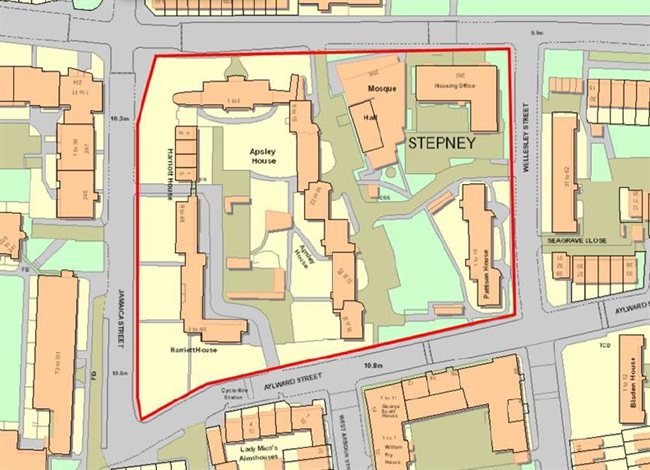
The area covered by the consultation into the future of Harriott, Apsley, Pattison (HAP) Houses
What would an infill scheme mean for residents?
'Infill' is the term that is used when most or all existing buildings on an estate stay as they are, with any new homes being built either in existing open spaces or in spaces that are being used for a different purpose (eg car parks).
We expect that an infill scheme around Harriott, Apsley and Pattison (HAP) Houses would result in the following:
-
Additional 95 new homes on site
-
All 58 existing parking bays on the estate will be removed to provide space for new homes and reprovide the green space built upon.
-
New wheelchair homes will be provided with parking space
-
Loss of a number of trees
-
Loss of open space & no significant improvement to those remaining
-
Phase 1 will allow for the reprovision of the mosque.
The following image shows where additional homes could be built around Harriott, Apsley and Pattison (HAP) Houses as part of an infill scheme:
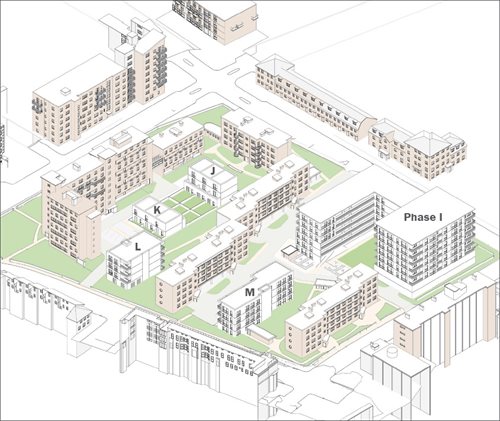
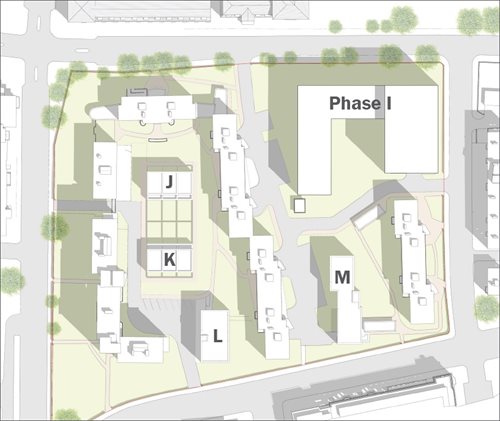
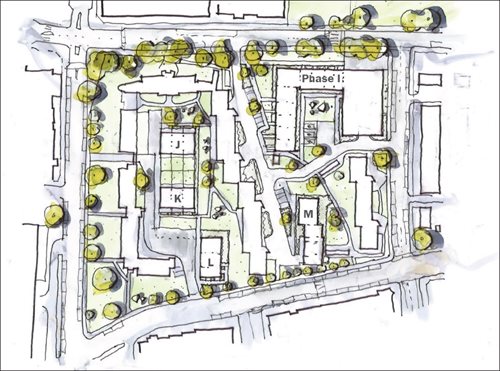
The following table shows the number of new homes that we expect would be created as part of an infill scheme around Harriott, Apsley and Pattison (HAP) Houses:
| Block |
1 bedroom |
2 bedrooms |
3+ bedrooms
|
Total |
| J |
- |
- |
3
|
3
|
| K |
- |
3
|
- |
3
|
| L |
- |
7
|
- |
7
|
| M |
- |
- |
7
|
7
|
|
Phase 1
|
20
|
21
|
34
|
75
|
|
Overall
|
20
|
31
|
44
|
95
|
The following images show some examples of what infill homes could look like:
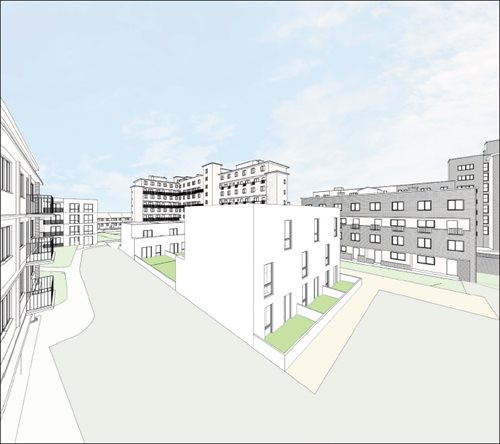
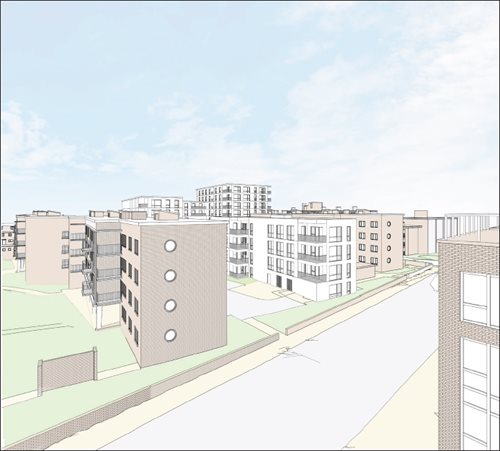
What would a regeneration scheme mean for residents?
Unlike an infill scheme, a regeneration scheme would involve replacing existing buildings with new ones.
We expect that a regeneration scheme around Harriott, Apsley and Pattison (HAP) Houses would result in the following:
- Significantly increase number of genuinely affordable homes in the local area
- Create a new truly mixed sustainable community
- Design of masterplan and new homes will follow principles of 'Secured by Design'
- New homes will be of the highest design standards offering high quality accommodation
- Homes will provide high acoustic performance to avoid noise nuisance
- Larger units of 3 bedroom or greater will include a separate kitchen and living space
- Separate kitchens will be provided wherever possible in 2 bedroom units.
The following images show where the new homes could be built around Harriott, Apsley and Pattison (HAP) Houses as part of a regeneration scheme:
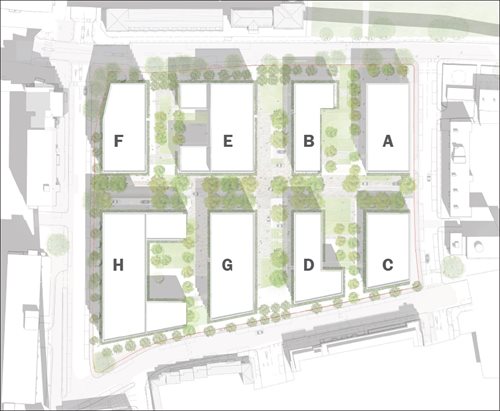
The following table shows the number of new homes that we expect would be created as part of a regeneration scheme:
| Block |
1 bedroom
|
2 bedrooms
|
3+ bedrooms
|
Total
|
|
A
|
12
|
24
|
12
|
48
|
| B |
- |
10
|
13
|
23
|
|
C
|
- |
- |
24
|
24
|
|
D
|
5
|
11
|
12
|
28
|
|
E
|
14
|
28
|
31
|
73
|
|
F
|
26
|
35
|
9
|
70
|
|
G
|
- |
30
|
32
|
62
|
|
H
|
36
|
39
|
44
|
124
|
|
Overall
|
93
|
177
|
177
|
447
|
The following images show some examples of previous projects delivered by PRP architects . They should be seen as examples, not firm designs:
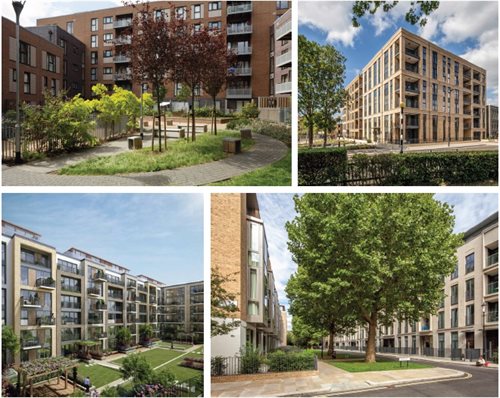
The following images give an initial idea of what a regeneration scheme might look like for Harriott, Apsley and Pattison (HAP) Houses:
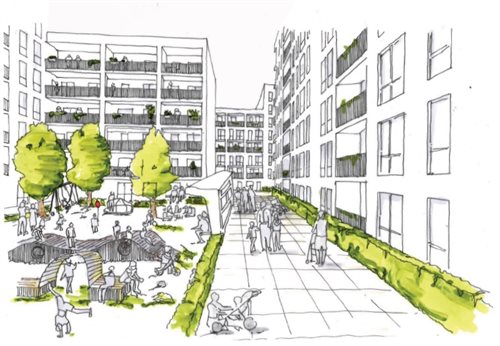
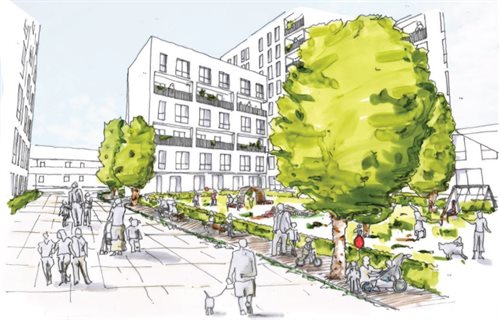
A regeneration scheme around Harriott, Apsley and Pattison (HAP) Houses would be delivered with the following commitments in mind:
- Streets and new routes to be lined with suitably sized trees
- 14 disabled spaces (increasing to 44 in future, where required)
- High quality of design and materials in public realm areas
- Clear strategy to provide defensible spaces and privacy to ground floor homes
- Network of private green spaces for residents
- Rich and vibrant planting and biodiversity scheme
- Mix of social spaces with a focus for community engagement across generations
Tower Hamlet’s car free planning policy greatly increases possibility for green spaces throughout the regeneration. For residents who currently rent an existing bay on the estate - the council will seek, where possible, to offer an alternative bay from its nearby parking stock.
A regeneration scheme could be laid out in two ways:
Option 1 - Green streets
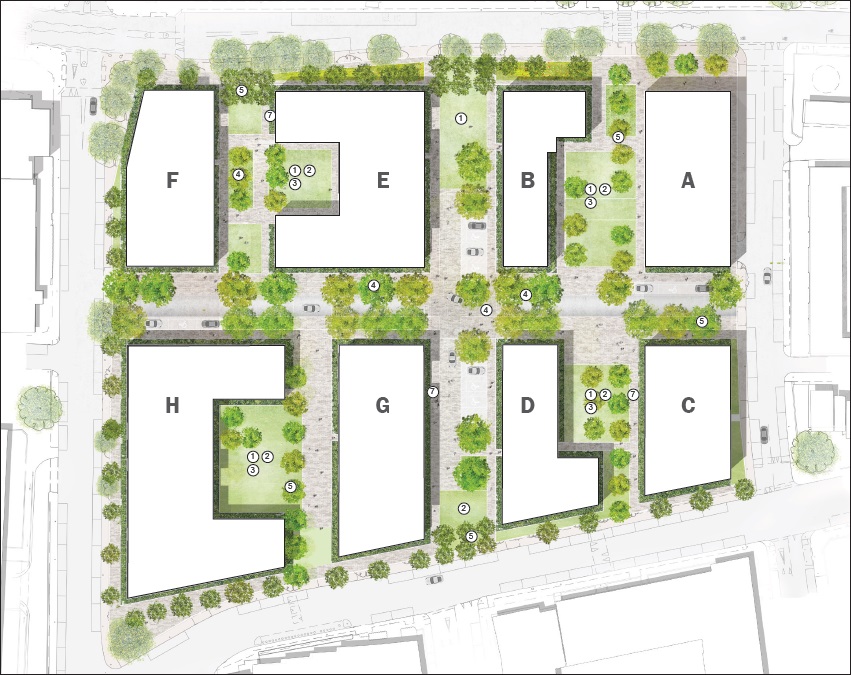
Option 2 - Streets with parking
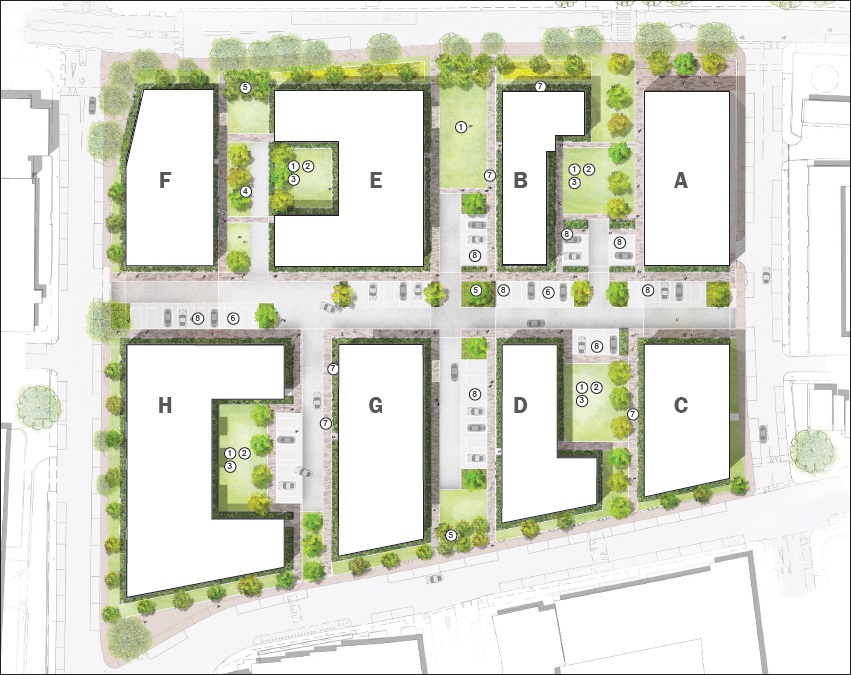
The numbers in the above images refer to the following:
1 - Play facilities
2 - Social spaces
3 - Growing areas
4 - Green streets
5 - Trees
6 - Block paving
7 - Planting
8 - Disabled parking
How can I have my say?
Due to the unprecedented situation with the coronavirus and in light of the recent health and safety advice from the government, the council has decided to cancel the planned face-to-face elements of its resident engagement programme for Harriott, Apsley and Pattison Houses. However please note that the ballot will go ahead as planned, you should receive your ballot papers on Thursday 19 March and you will be able to cast your vote anytime until 5pm on 9 April 2020.
The consultation bus will no longer be on the estate and officers will also not be present at the Harford Street centre as previously advised. However council officers will be contactable via email or telephone.
If you would like to know more about the regeneration proposals and ask any questions about the rehousing options then please contact the project team on 0207 364 7799 or email housing.regeneration@towerhamlets.gov.uk.
If you require assistance withcasting your vote or need general help with the ballot then please contact PPCR on freephone 0800 317 066.
Key documents
We want you to be able to refer to key documents in your own time. Wherever possible, we will upload copies to this website to allow you to download them.
Landlord offer
The future of Harriott, Apsleyand Pattison Houses - Landlord offer
Consultation boards used at previous events
Letters to residents
Newsletters